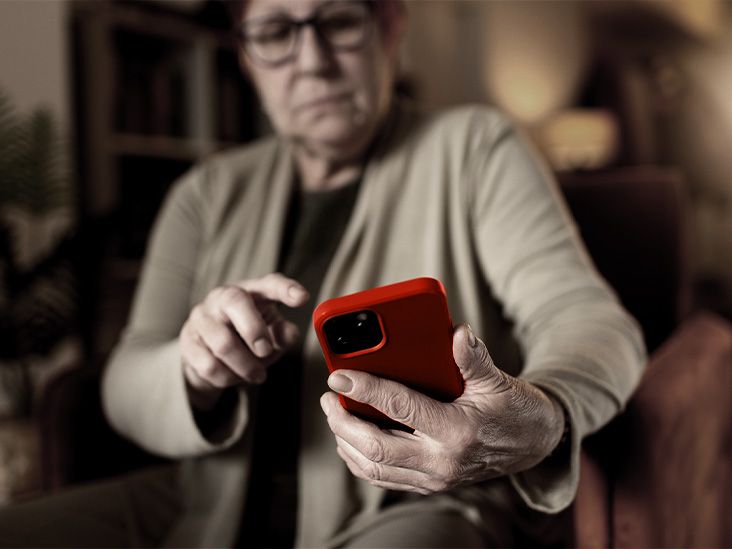Let's be real for a moment getting older isn't something we love talking about, is it? But you know what? Most of us have this same dream: growing old in the comfort of our own homes. And honestly? It's more than just a pipe dream. It's absolutely possible.
The catch? Like anything worth doing, it takes some planning. A lot of heart, a bit of legwork, and sometimes a few grab bars. But I'm getting ahead of myself. Let's talk through what aging in place really means, and whether it's the right path for you or your loved one.
What Aging in Place Really Means
So what is aging in place, exactly? Spoiler alert: it's more than just stubbornly refusing to leave your house. At its core, it's about maintaining your independence, comfort, and safety in your own home regardless of your age or physical abilities.
According to the National Institute on Aging, it's about having the ability to live where you want, when you want, for as long as you want. That sounds pretty appealing, doesn't it?
But here's the thing aging in place isn't just about staying put. It's about actively adapting your environment and support systems to keep you safe and thriving. Sometimes that means physical changes to your home, sometimes it means building a solid care network.
And here's a stat that might surprise you: the CDC reports that a whopping 90% of seniors want to age at home. Pretty telling, right? We all want to stay surrounded by our memories and routines.
But here's where reality check comes in AgingInPlace.org tells us that only about 10% of American homes are currently set up for aging residents. That's a big gap, and it shows us that good intentions need good planning to become reality.
Is This Path Right for You?
So how do you know if aging in place is the right choice? Let's look at some signs that might point you in the right direction.
If you're still managing your daily activities pretty independently, and you've got good support from family, friends, or paid caregivers, you're off to a great start. You don't need to be completely self-sufficient nobody is but you should be generally managing well.
On the flip side, there are times when staying put might not be the safest option. If you're experiencing more falls, struggling with serious cognitive changes, or you're simply lacking the support you need, it might be time to consider alternatives. And that's okay. Circumstances change, and so should our plans.
Let me share something that happened to my neighbor Margaret. After her hip surgery, she was determined to stay at home and she made it work for a while with some temporary caregiving help, grab bars in the bathroom, and a walk-in shower. But when climbing stairs became too much, she made the smart choice to move to a first-floor apartment. Sometimes the most independent choice is knowing when to adapt.
Your Safety Checklist
One of the biggest conversations around aging in place is safety, and honestly, it should be. Because what good is staying home if it's not a safe place to be?
Let's talk about some key modifications that can make your home safer for aging in place. The bathroom probably one of the most important rooms to focus on often needs the most attention. Grab bars near the toilet and in the shower, non-slip mats, and even walk-in tubs can make a world of difference.
Lighting is another major player here. Dimmer switches, brighter bulbs, and strategic nightlights can help prevent those dangerous midnight trips to the bathroom. I learned this the hard way when my mom almost took a tumble because she couldn't see the edge of a rug. Small things, right? But they make a huge impact.
And those cords and throw rugs that we've all gotten used to? They become real hazards as we age. Tripping over a lamp cord or a rolled-up rug might seem minor now, but falls are actually the leading cause of injury-related death among older adults. The CDC has some sobering stats on this topic, but the good news is that simple modifications can dramatically reduce these risks.
| Area | Simple Fix | Affordable Cost |
|---|---|---|
| Bathroom | Add grab bars near toilet & tub | $20$50 |
| Hallways | Remove throw rugs | Free |
| Lighting | Install brighter bulbs, nightlights | $10$30 |
| Kitchen | Lower shelves; install pull-out drawers | $50$150 |
I'll tell you a quick story here I helped my mom add these little sticky mats under her favorite reading chair because she kept sliding forward. Such a small, cheap fix, but it completely changed how comfortable and safe she felt sitting there. These little tweaks add up to big changes in daily life.
Building Your Support Network
Here's something we don't talk enough about aging in place isn't a solo act. Even the most independent among us need a support system. And that can come from lots of different places.
First up, your informal support network: family, friends, neighbors. These are the people who can help with transportation, maybe bring over meals, offer companionship, or just check in regularly. This is where honest conversations with your loved ones become so important. Don't assume they know what you need tell them.
But sometimes, informal support isn't enough, and that's perfectly normal. That's where professional in-home care comes in. Whether you need a health aide for medical tasks or a homemaker to help with daily living activities, there are professionals trained to help you stay safe and comfortable at home.
Don't overlook respite care either when your regular caregivers need a break, respite services can step in. And adult day programs? They're not just for entertainment they offer companionship, activities, and often medical monitoring too.
Here's a secret that's only recently been discovered: technology can be your best friend when aging in place. Medical alert systems (those bracelets you might have seen) aren't just for emergencies they offer peace of mind. Smart home features like voice control and automatic shut-off appliances can make daily tasks easier. Motion sensors can let family members know if you've been more or less active than usual.
For finding these resources, I really want to point you toward some trusted sources. The Eldercare Locator (800-677-1116) can connect you with local services, and their website is a treasure trove of information. The National Association of Area Agencies on Aging (n4a.org) is another great resource.
And here's something that really spoke to me from a professional perspective Dr. Jenny Sanford, AGNP-C, once said that occupational therapists can assess specific limitations and help you retrofit your home safely and efficiently. Professional assessments can catch things we might miss on our own.
The Financial Side of Things
Let's talk money the topic that makes some people uncomfortable, but is absolutely crucial for successful aging in place. First, let's look at costs. Home modifications can run the gamut from a few hundred dollars for basic changes to $20,000 or more for full universal design renovations. That's a big range, and it means there are options for different budgets.
Medicare does cover some in-home skilled nursing care, but here's an important distinction it doesn't cover custodial care (help with daily activities like bathing or dressing). And if you qualify for Medicaid in your state, Medicaid Waivers may cover personal care at home.
What about financing options? Reverse mortgages can be helpful, but honestly, talk to a financial advisor before diving in. Long Term Care Insurance is another option, though it can be expensive and often excludes pre-existing conditions. Veterans might qualify for the Aid and Attendance Benefit through VA benefits.
| Type | Coverage | Max Benefit | Limitations |
|---|---|---|---|
| Medicare | Skilled nursing visits, PT, OT | Up to 100 days | Needs qualifying hospital stay |
| Medicaid | Homecare, adult daycare | Varies by state | Income-based eligibility |
| LTCI | Daily benefit for home care | Set by policy | Expensive; excludes pre-existing conditions |
| Private Pay | Full flexibility | Unlimited | No government help |
Here's a piece of advice I really want you to take to heart make sure to check with a certified financial planner who specializes in senior care before making any big financial moves. Your home equity and lifetime savings are serious matters, and the wrong move could affect your long-term security.
When It's Time to Reconsider
Sometimes the hardest part of aging in place is recognizing when it might be time to reconsider. And I want to say this gently that's not a failure. It's actually a sign of wisdom and self-awareness.
Some warning signs might include repeated falls or injuries, difficulty managing medications or daily tasks, caregiver burnout, or feeling isolated frequently. These aren't reasons to feel ashamed they're signals that it might be time to look at different options.
The emotional weight behind wanting to stay home is enormous. I've seen strong, independent people struggle with the idea of changing their living situation. And you know what? That struggle is completely valid. Home isn't just a place it's filled with memories, routines, and a sense of identity.
The key is approaching these conversations with family and healthcare providers openly and honestly. And here's something that might surprise you there are compromise options that don't require a full move. Adult day centers, supportive living communities, or even NORCs (Naturally Occurring Retirement Communities) might offer the support you need while keeping you connected to your familiar environment.
My dad was a perfect example of this. He was adamant about staying in his house, no matter what. But once he tried an adult day program and made a new friend there, his perspective began to shift. Sometimes we just need to see that change doesn't mean loss it can mean new opportunities.
Your Journey Forward
As we wrap this up, I want you to remember something important: aging in place is absolutely possible for many people, but it requires intentionality. It's not just about refusing to leave your home it's about actively creating an environment where you can thrive.
This means knowing what changes your home might need, having reliable caregiving support in place, and understanding how you'll finance everything. Yes, there are risks involved, especially around safety. But with thoughtful modifications, dependable care, and a strong support network, countless older adults live rich, independent lives right where they love to be.
If you're considering this path, please don't feel alone. There are resources, professionals, and communities ready to help you navigate this journey. Start small maybe add some brighter lighting or remove a few throw rugs. Think ahead about what changes might be needed in the future. And never hesitate to ask for help when you need it.
Because at the end of the day, aging shouldn't mean giving up what matters most your sense of home. Whether that's your physical house or your emotional sense of belonging, these connections are worth preserving, protecting, and planning for. You've got this, and there are people ready to help you every step of the way.
What resonates most with you from what we've talked about? Have you already started making some of these changes, or is this giving you new ideas to consider? I'd love to hear how your own aging in place journey is shaping up.
FAQs
What does aging in place mean?
Aging in place means living in your own home safely and comfortably as you grow older, with the help of home modifications, support systems, and care services as needed.
How can I make my home safer for aging in place?
You can improve home safety by installing grab bars, removing tripping hazards, improving lighting, and making daily living spaces more accessible with simple changes.
What types of support are available for aging in place?
Support options include family and friend networks, professional in-home care, adult day programs, medical alert systems, and community resources like the Eldercare Locator.
Does Medicare cover aging in place services?
Medicare covers some skilled nursing and therapy services at home but does not pay for non-medical custodial care like help with bathing or dressing.
When should I reconsider aging in place?
If you're experiencing frequent falls, struggling with daily tasks, feeling isolated, or lacking support, it may be time to explore other living or care options.
Disclaimer: This article is for informational purposes only and does not constitute medical advice. Always consult with a healthcare professional before starting any new treatment regimen.
Related Coverage
Cats can provide companionship, mental stimulation, and comfort for seniors with dementia. Learn how cats benefit dementia patients and tips for integrating a feline companion....
Quick ways to spot and stop Medicare scam calls, protect your personal info, and report fraud with confidence and ease....
Learn how to choose the best glycemic index (gi) brands of bread, cereal, pasta and more for managing blood sugar if you have diabetes or prediabetes....
Coping with retinol irritation like burning, redness, dryness? Learn how long symptoms last, when to worry, and get aftercare tips to heal skin post inflammation....
Find the best Montana Medicare options for your needs. Compare plans, save money, and get the coverage you deserve in Big Sky Country....
Stay safe with medication safety for seniors. Get practical tips to manage prescriptions, avoid interactions, and protect your health....
Heart health crossword puzzles provide an entertaining way to learn about cardiovascular wellness. Working on them offers cognitive benefits while imparting key knowledge....
Meet the Medicare residency rule by holding a green card for 5 continuous years. Get tips on eligibility, exceptions, and how to apply successfully....
Beers Criteria 2023 helps older adults avoid risky medications and choose safer options for aging well with fewer side effects and better health outcomes....
Soothe anxiety and boost resilience with earthy, aromatic ashwagandha tea. Learn how the Ayurvedic adaptogenic herb relieves stress and fatigue plus simple homemade preparation....









